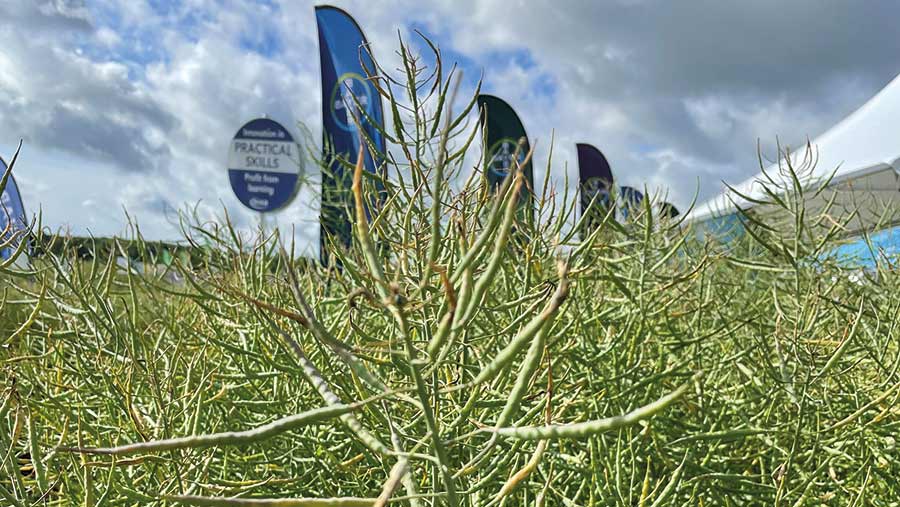Cereals 2022: New OSR candidate has higher N use efficiency
 © MAG/Richard Allison
© MAG/Richard Allison Outstanding tolerance to key environmental stresses and the ideal characteristics for early sowing, plus the flexibility to drill well into September, are the key features of Bayer Dekalb’s latest hybrid OSR.
Unveiled at the Cereals event, Expose is a candidate variety up for recommendation later this year, which the breeder believes sets a new benchmark in stress tolerance.
See also: How farmer trial will test Canadian combine weed seed destroyer
The breeder points to its excellent foliar disease and turnip yellows virus resistance, a high oil content and high resistance to lodging with very stiff stems.
Nitrogen efficiency
Trials also show it to be noticeably more efficient in its nitrogen use than other top-performing hybrids.
“We entered DK Expose into National List trials having seen it convincingly top our 51-site pan-European trial set,” explains Dekalb breeder Matthew Clarke.
“A completely untreated yield of 4.33t/ha stood out at 107% of the control mean. And, unusually, it performed equally strongly under the continental climates of Germany and France, the ultra-continental climates of Poland, Hungary and the Ukraine, and the more maritime conditions of the UK, Denmark and Sweden.”
He says this gave them the confidence it is as tolerant as it can be to a broad range of environmental stresses – including winter cold and summer drought, as well as disease and viral pressures beyond those to which it carries known resistance.
Restricted nitrogen screening
Another valuable element of Expose’s flexibility and reliability is evident in recent Dekalb restricted nitrogen screening trials.
Four turnip yellows virus resistant varieties tested at two sites last season showed an average gross output reduction of just under 0.25t/ha, when spring nitrogen applications were reduced from 180kg/ha to 140kg/ha.
At just 0.11t/ha, the new variety lost less than half this average and a quarter of the 0.44kg/ha lost by the least nitrogen-resilient variety.
Mr Williams notes that an average gross output of 4.63t/ha and 4.52t/ha under the two nitrogen regimes shows Expose is no slouch in performance terms.
He calculates that its superior nitrogen use efficiency offers very valuable margin gains from input economies at current fertiliser and rapeseed values.
More than this, it suggests the variety is able to better cope with conditions in which nitrogen availability is restricted by drought or other environmental stresses.
This may well be part of the reason it performs so well across so many different climates, he says.
Expose is up for recommendation later this year.
Variety vital statistics |
|
| UK gross output NL2 (2021) | 4.83t/ha |
| Oil content | 44% |
| Lodging resistance* | 9 |
| Stem stiffness* | 8 |
| Phoma/stem canker resistance* | 8 |
| Light-leaf spot resistance* | 6 |
| Turnip yellows virus resistance | Yes |
| Pod shatter resistance | Yes |
| *On a scale of 1-9, with 9 expressing that character to a high degree |
|

